How many churches do you come across in Le Marche? Even the smallest hamlet has a chapel or church; We already knew that the Camaldolenser monks were active here.
But of course the region once belonged to the Papal States. Italy is a relatively young country: until 1861, the boot-shaped peninsula consisted, among other things, of a collection of kingdoms, republics and the Papal States.
Even the rich baroque Santa Lucia church surprise everyone the first time they come across it. A small municipality like Serra San Quirico with such a luxurious religious building…
The same surprise happened during one of Isabelle’s walks with the walking group: another pearl of a prayer building, but in the village of Domo (part of the municipality of Serra San Quirico)
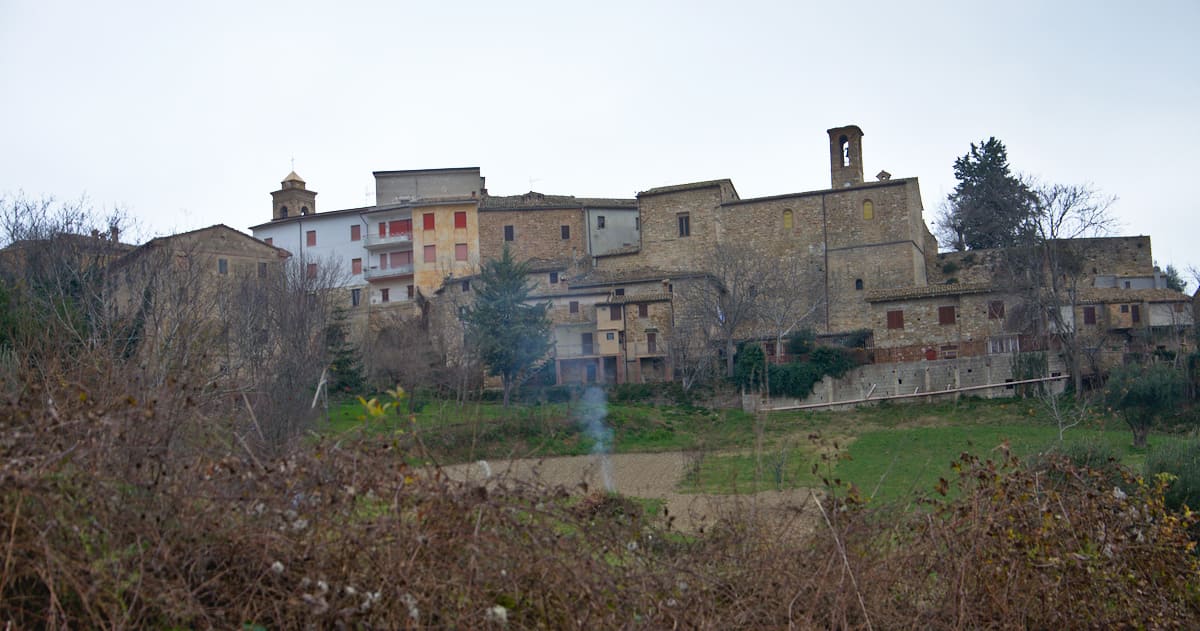
According to the official figures, there are still 51 permanent residents. The historic part is small with several alleys.

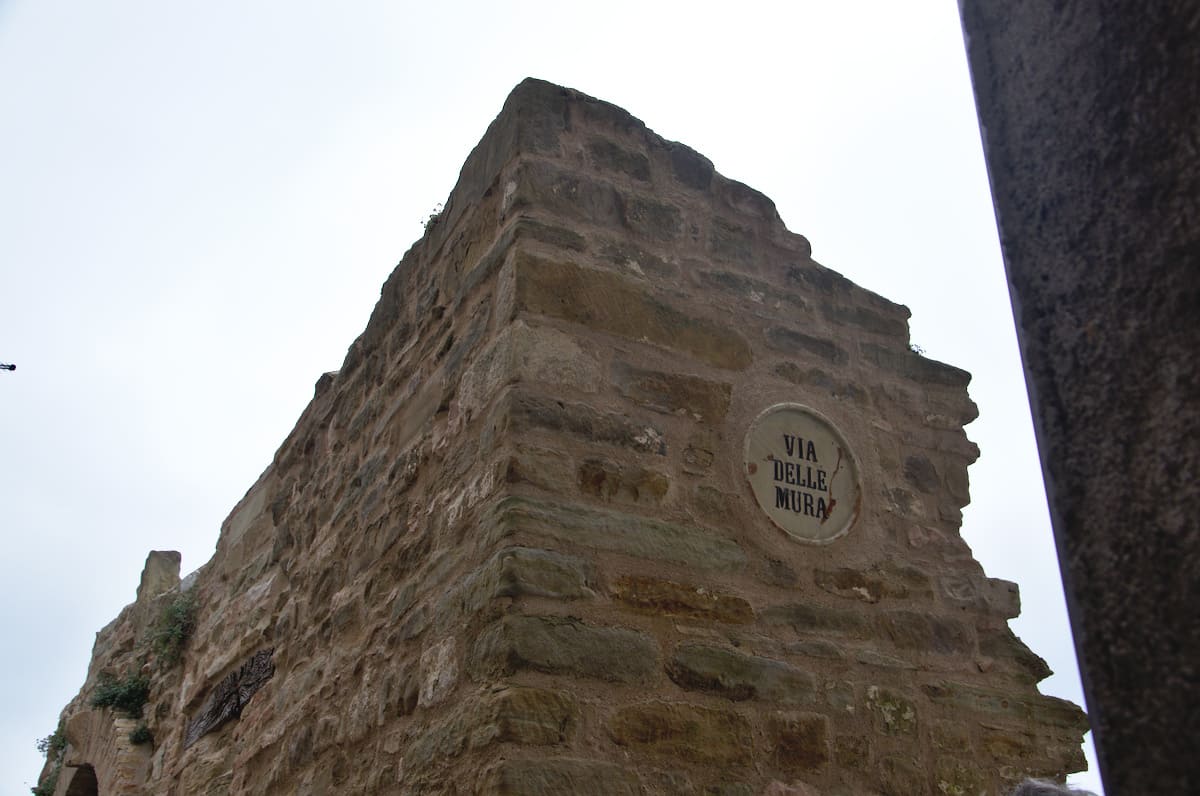
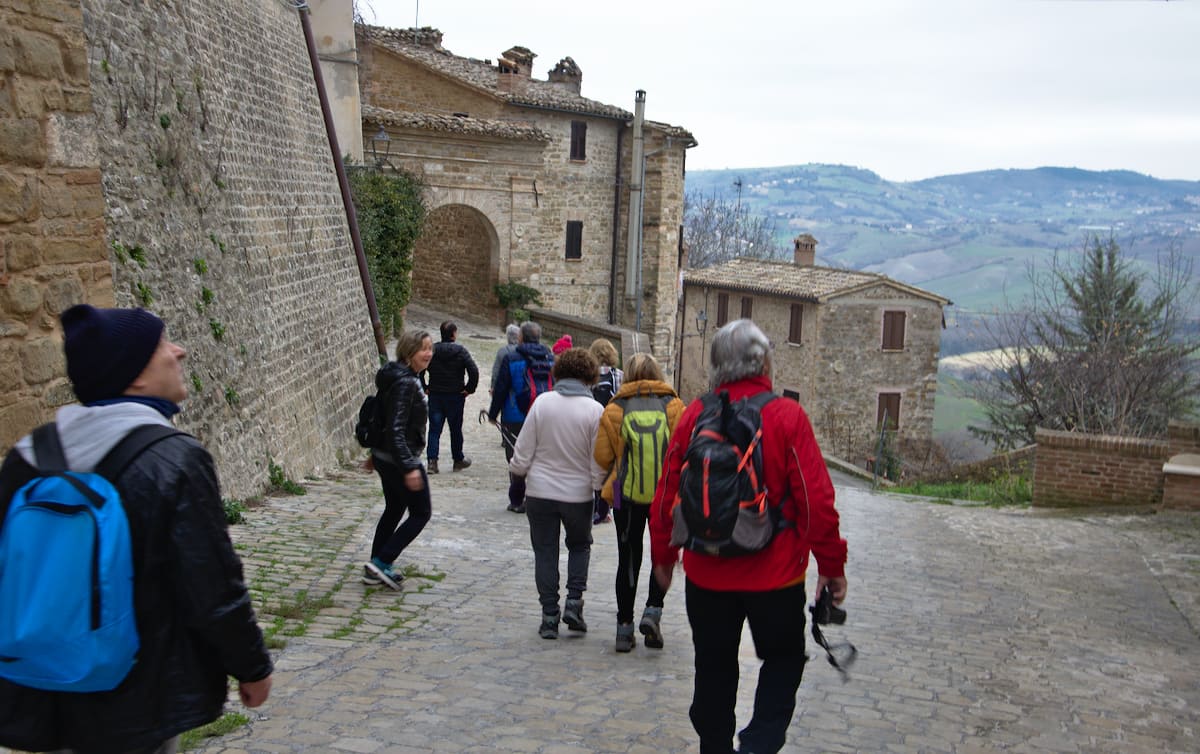
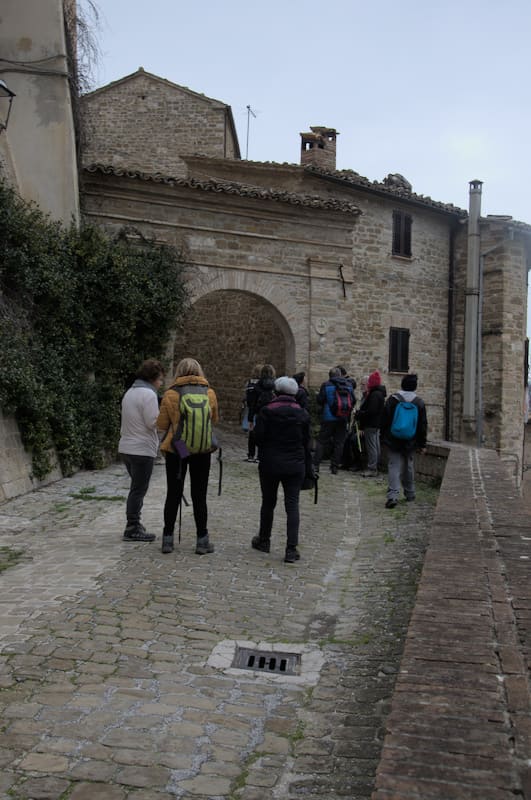
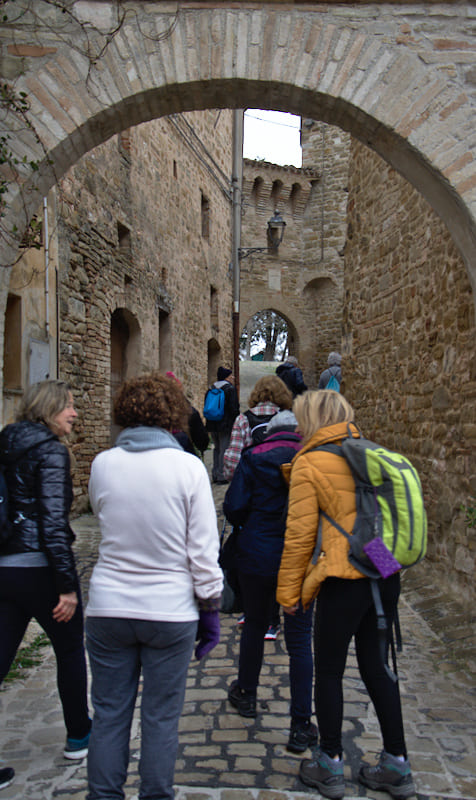
Eventually you end up on a square in front of the San Paterniano church. There used to be all kinds of residential houses, but the last one was demolished in the 1970s. Originally, the church was already there in the 13th century together with the castle village, but later it was renovated several times, including in the 15th century. The newest part dates from the 18th century.
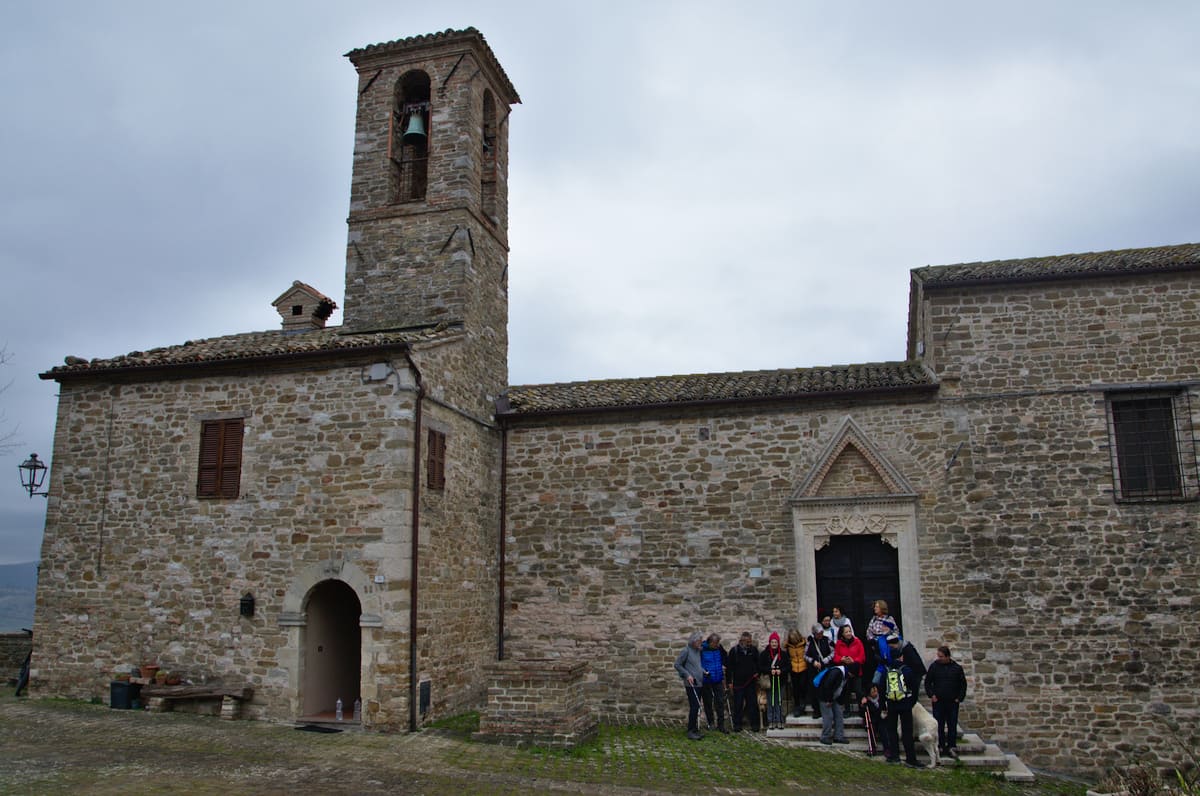
The left door is normally always open, so that one part can already be viewed. So plain on the outside, so lavishly frescoed on the inside!
The beautiful portal dates from 1473 with 2 columns along the sides and 3 images at the top:

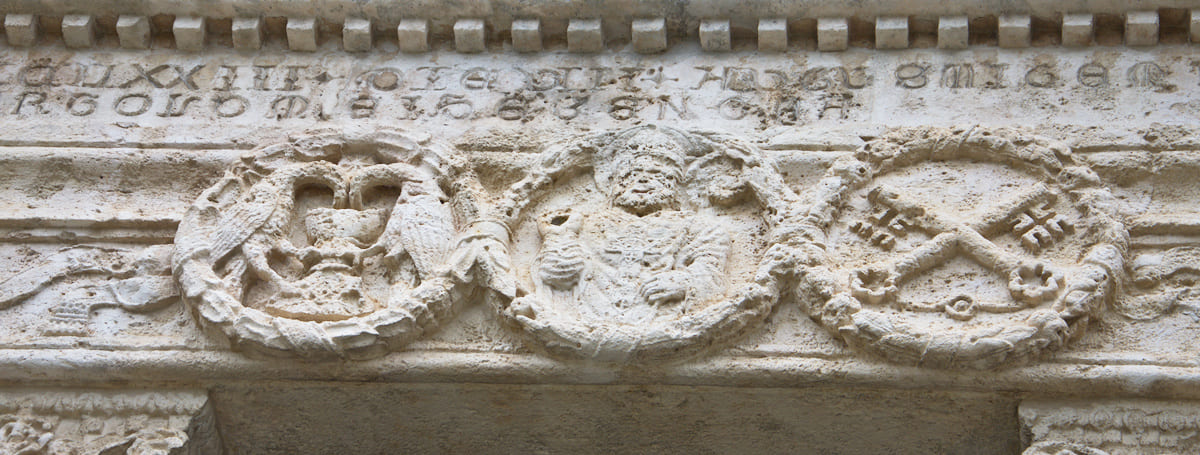
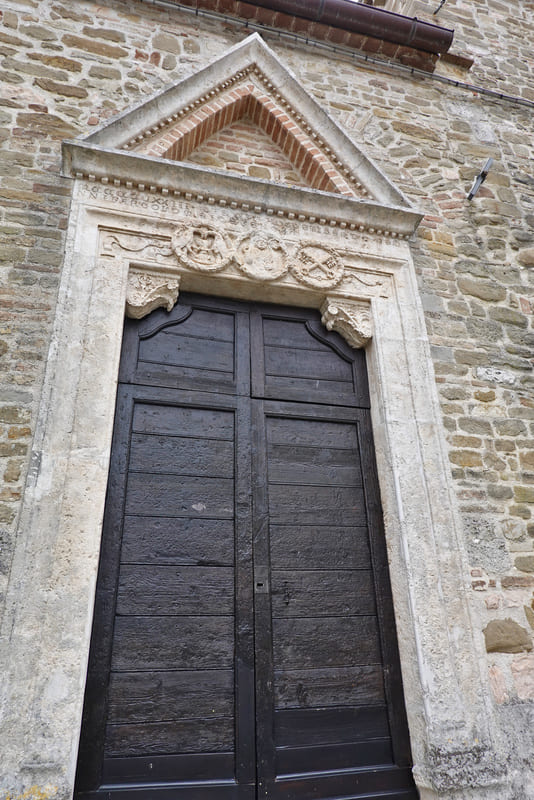
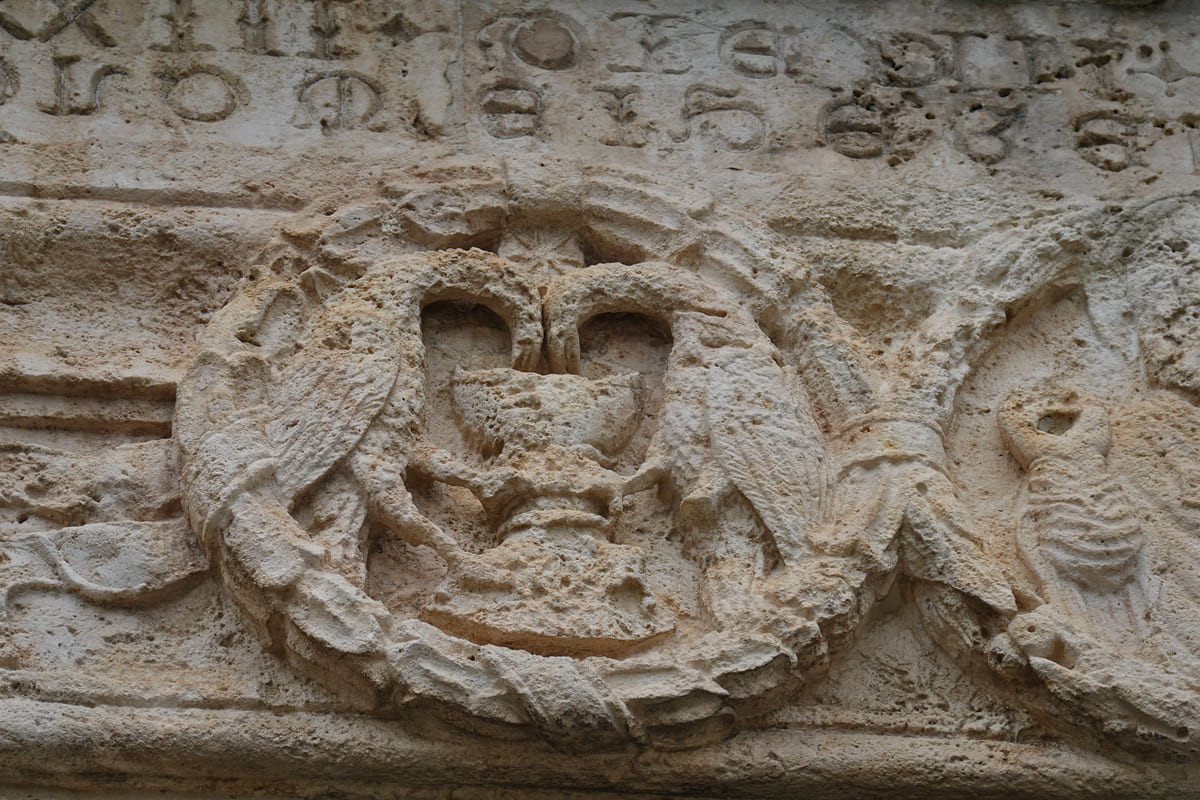
In the center is the image of Saint Paternianus and to the right are the keys of Pope Nicholas V.
On the architrave we read the following: MCCCCLXXIII DIE VII AUGUSTI TEMPORE DOMNI BARTOLOMEI DE GENGHA. (August 7th, 1473 in the time of Mr. Bartholomew of Genga.)
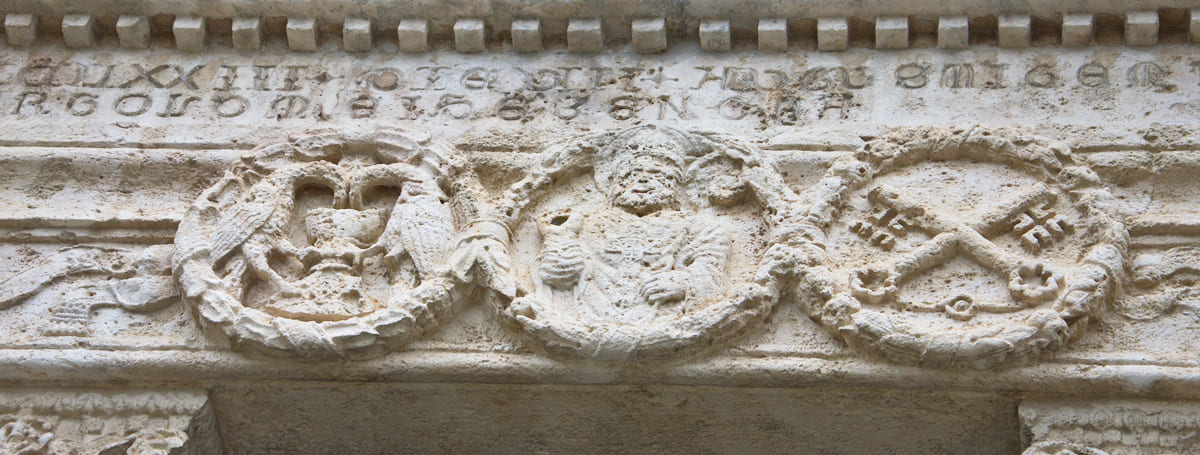
The Renaissance part, where the frescoes of the 15-17th century are also located, is almost always open.
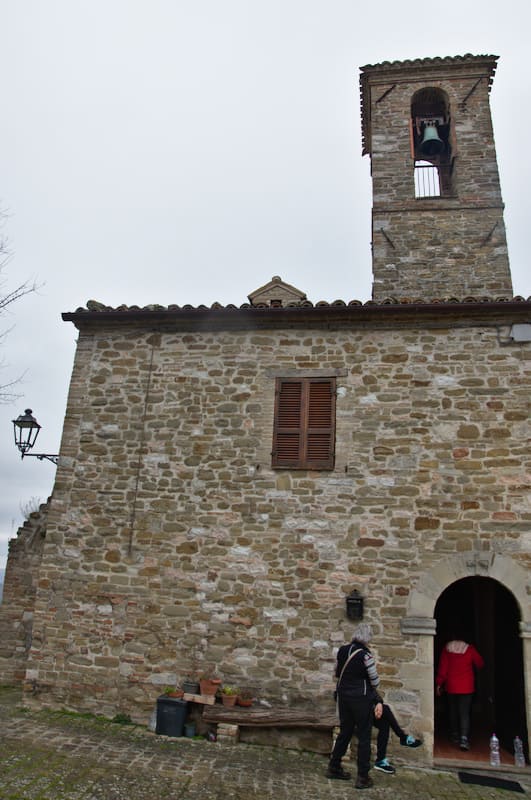

The work of art is the triptych (1470-1480) where the Madonna of Loreto, San Paterniano and Santa Lucia can be seen. It is suspected that the artist was the Maestro of Domo, who came from Fabriano.
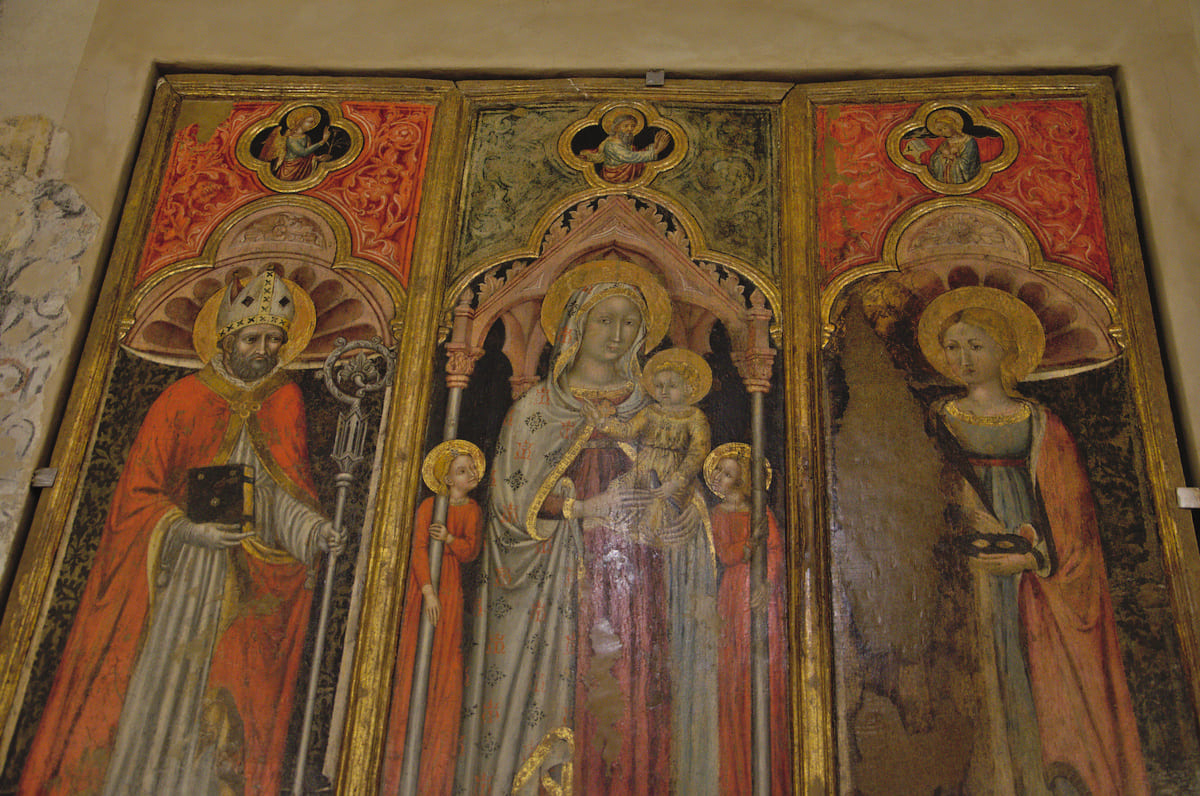
Other frescoes surround the triptych including Christ on the Cross surrounded by Mary, Saint John, Mary Magdalene and the Archangel Michael:
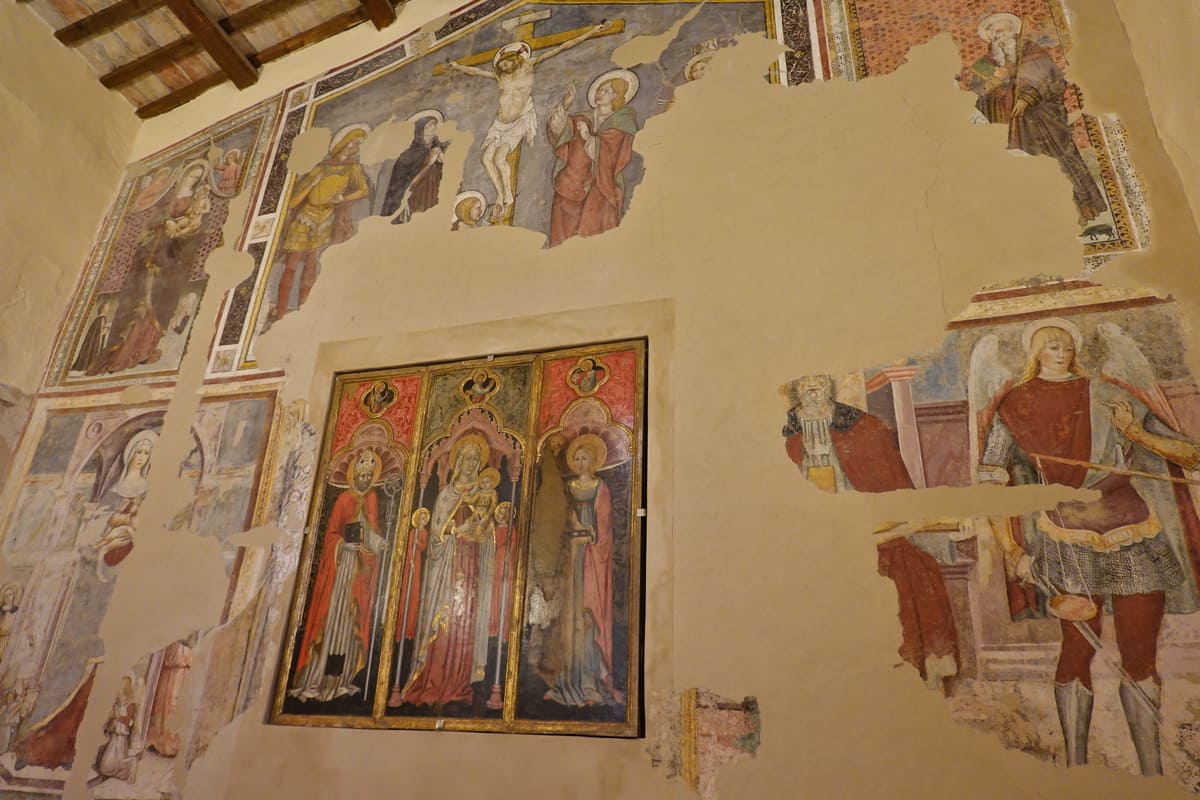
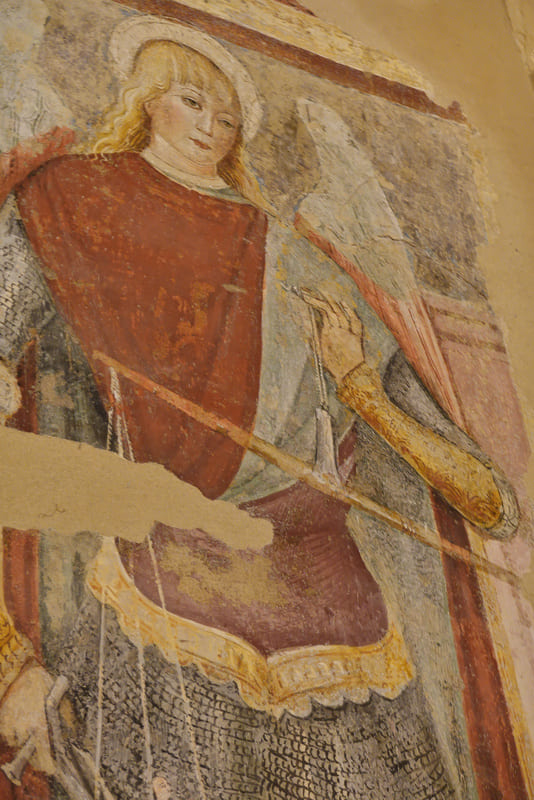
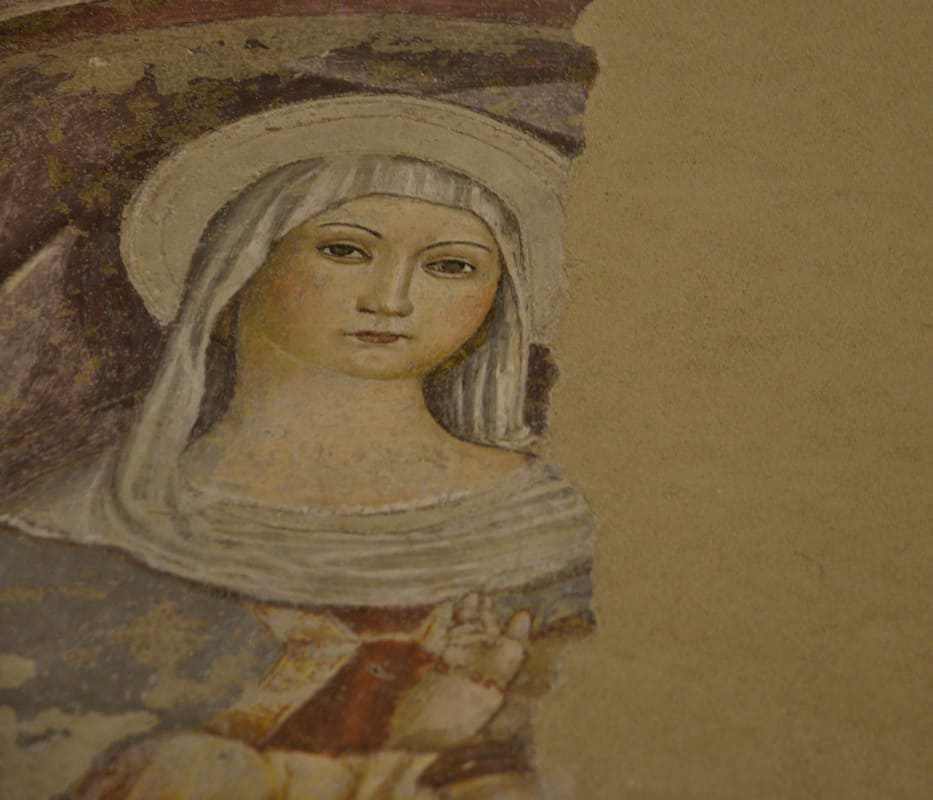
In front of it is the bust of Saint Paterniano, who was born in Fano about 270 AD and lived until about 360 AD. Due to this advanced age (quite exceptional for that time) he is usually depicted as an old man. He is said to have been abbot in a monastery near Fano and then became the first bishop of that seaside town. Fano and Grottamare therefore venerate him as their patron saint.
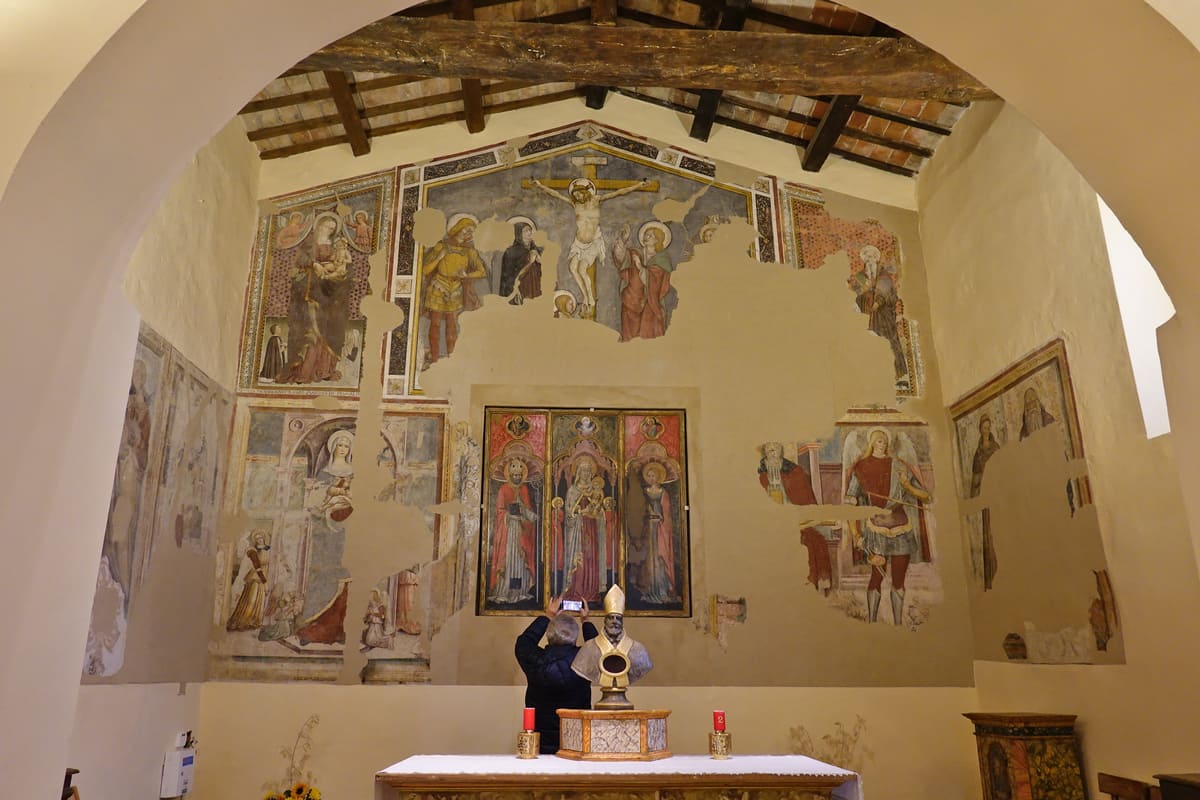
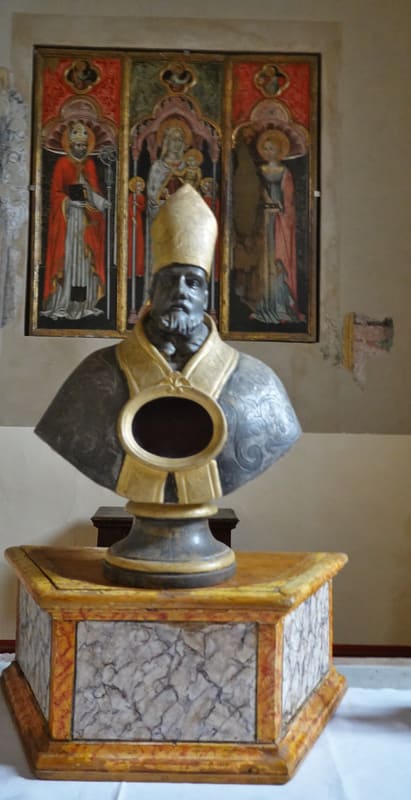
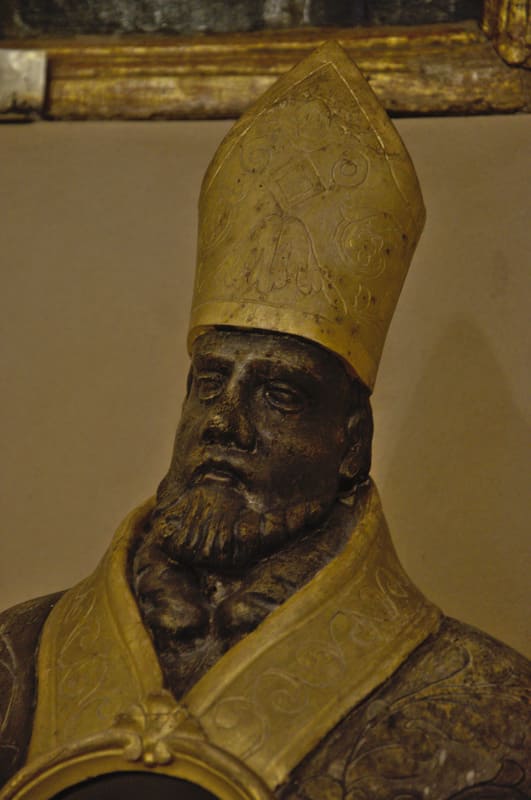
The side walls also contain frescoes:

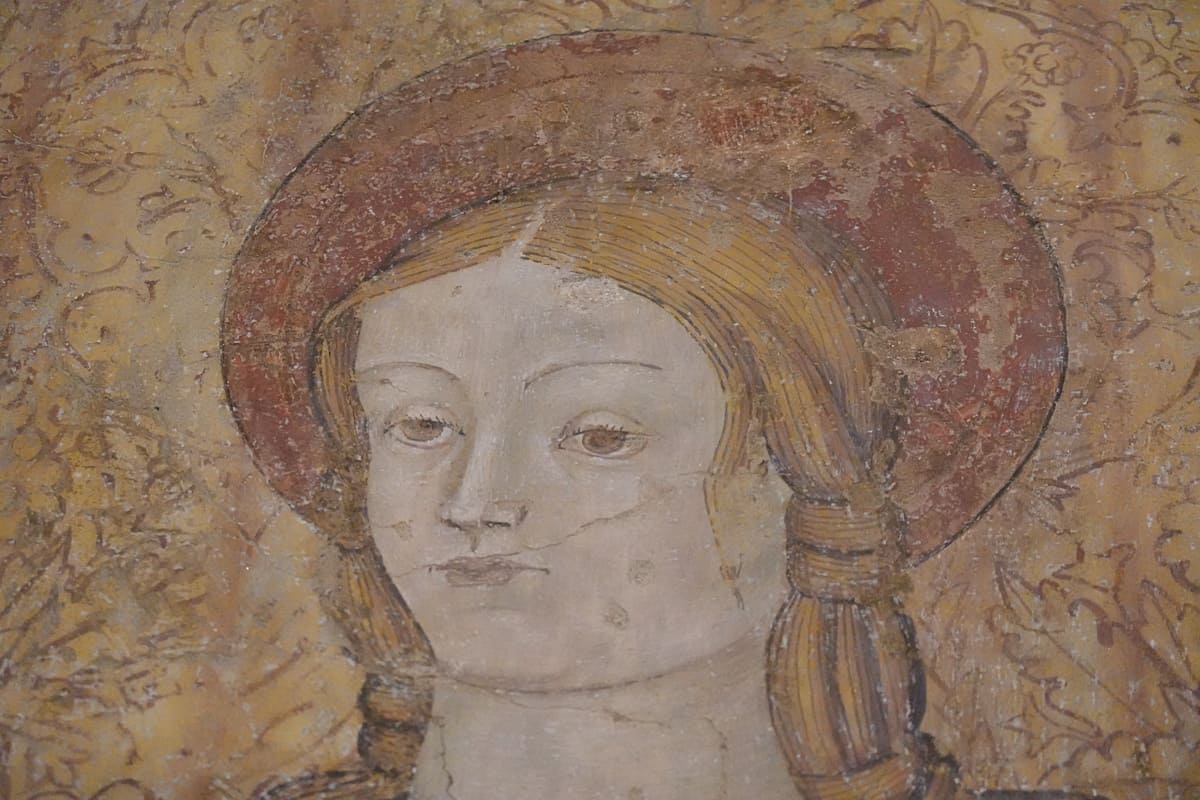
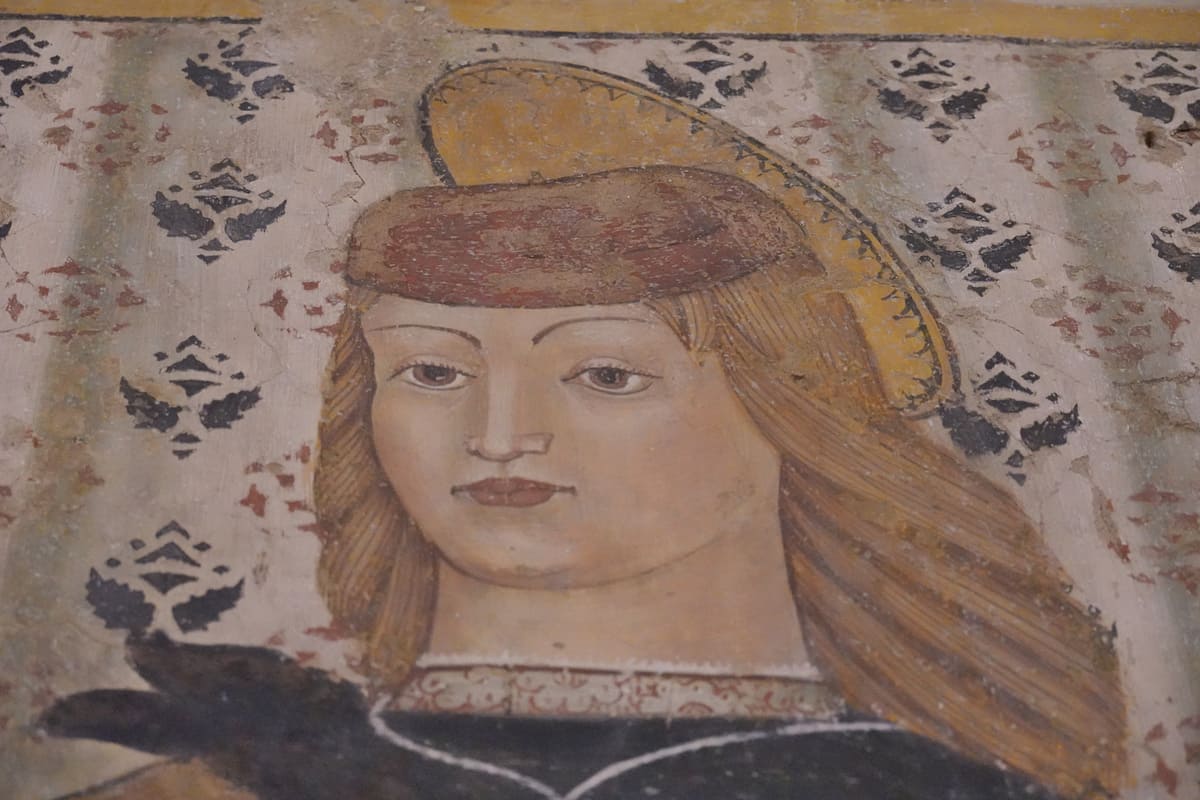
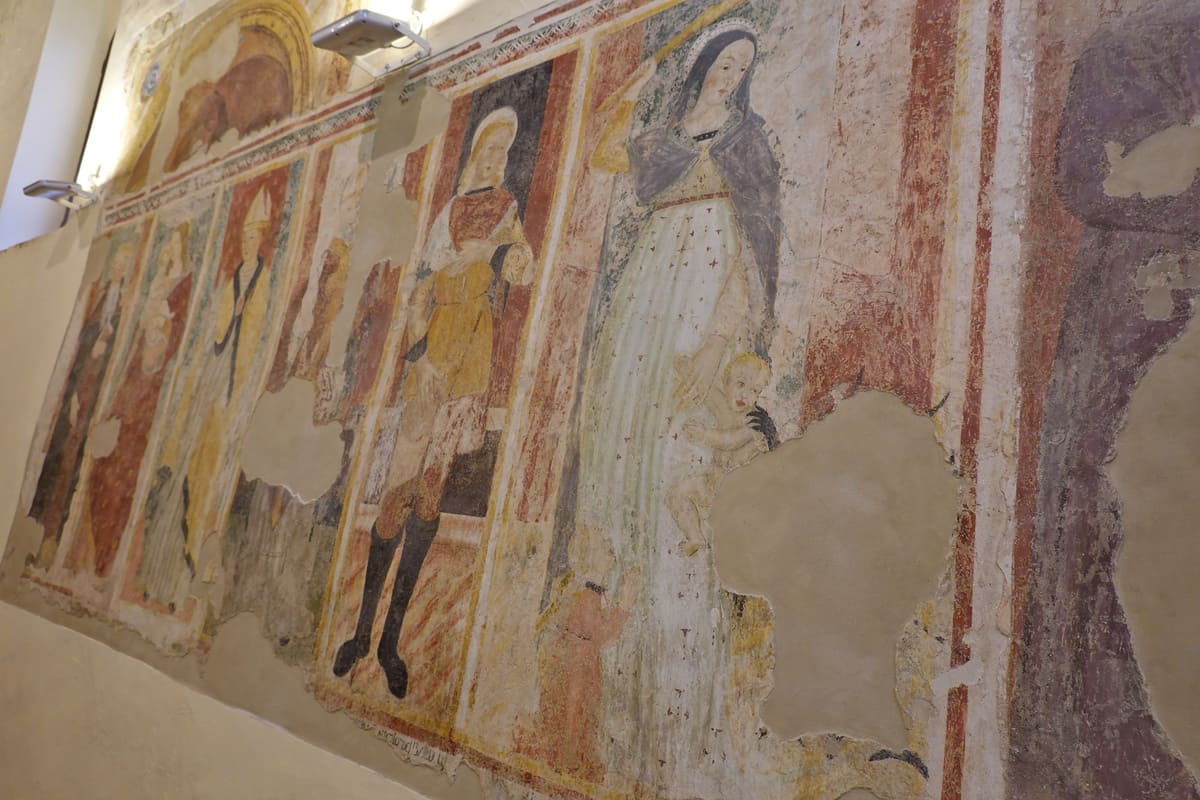

On the front is a painting depicting Mary as a village woman. Probably to refer to the later function of the church as a village church. Below also a triptych referring to the triptych: we see Saint Paternianus, Mary and Saint Lucia.
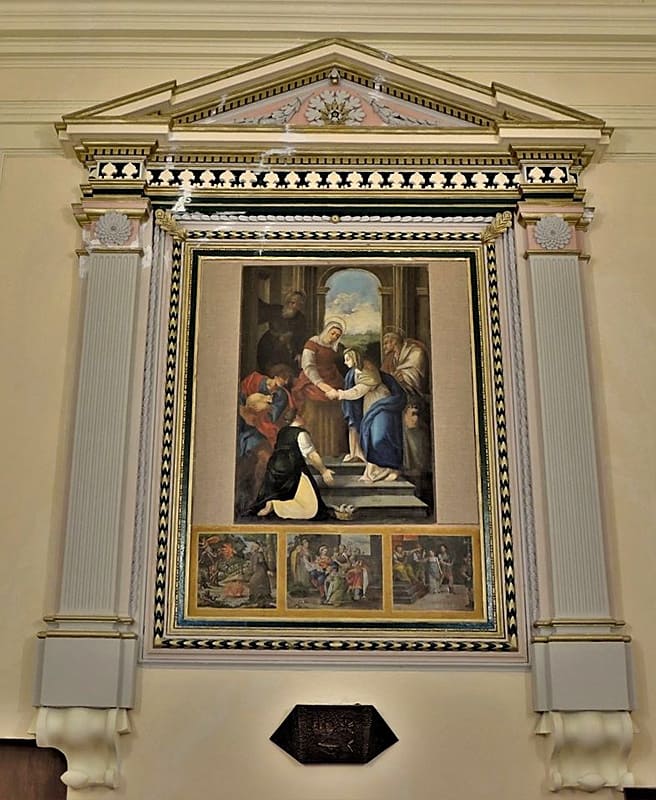
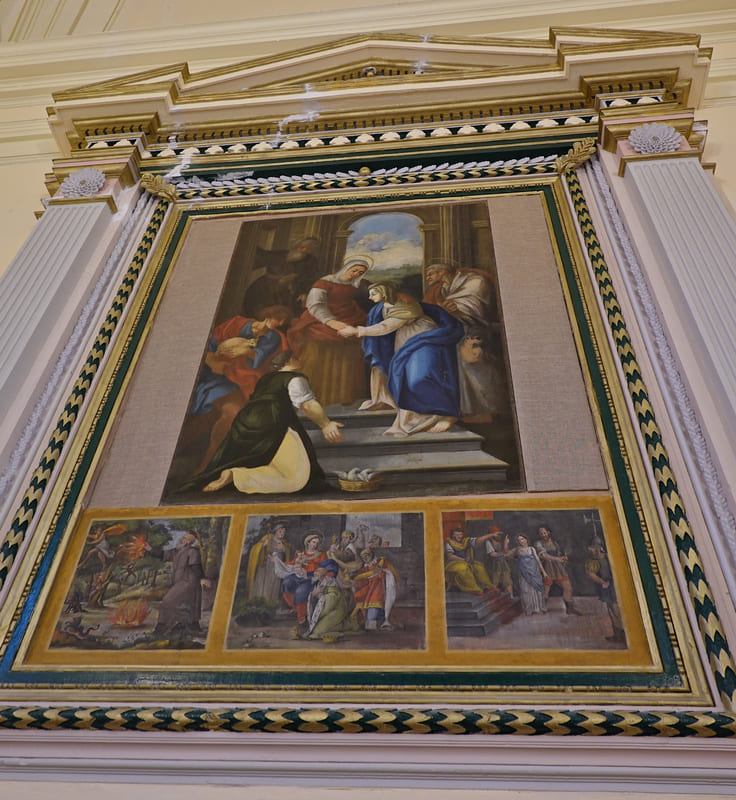

Unfortunately Isabelle could not visit the other part, because it was closed. If that ever happens, we will definitely write another article about it. The coordinates for the church can be found here.
On the way to Domo you can even get delicious cheeses at Celeste’s cow and sheep farm.

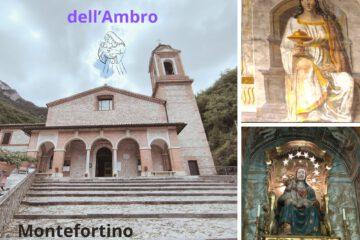

1 Comment
Clay · 4 March 2025 at 18:54
We have been trying to make it to Domo ever since we read about it on ecco lemarche a few weeks ago. We were not disappointed. Not finding the door to the left we asked at the bar and an incredibly friendly local walked us back to the church and showed us around. I was amazed when he explained how the frescoes had been covered with plaster and the “re-discovered”, showing us the “chip” marks on the artwork where the plaster had been pryed away!